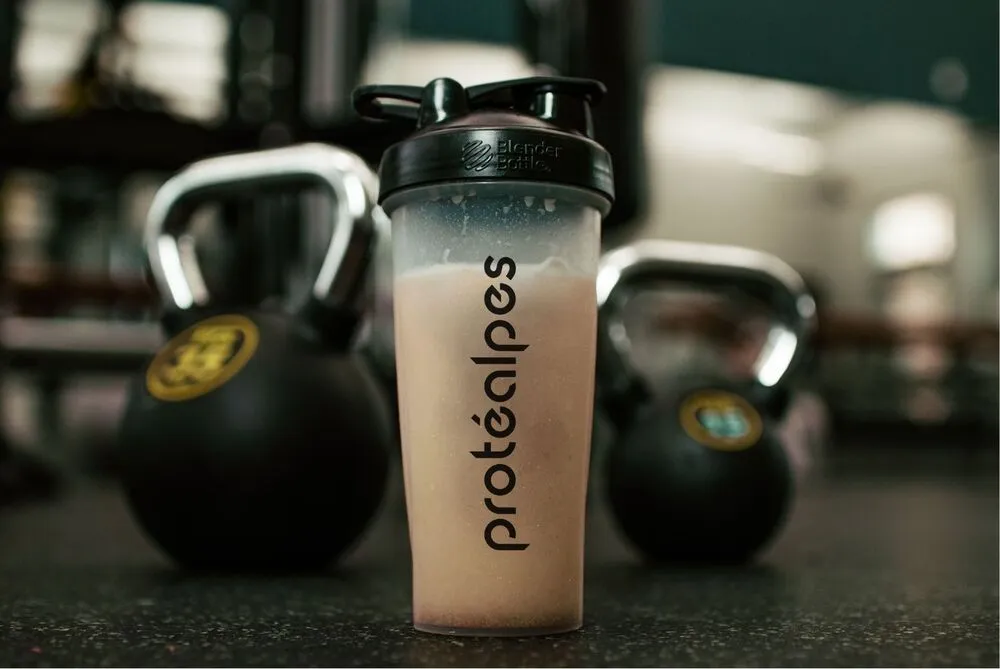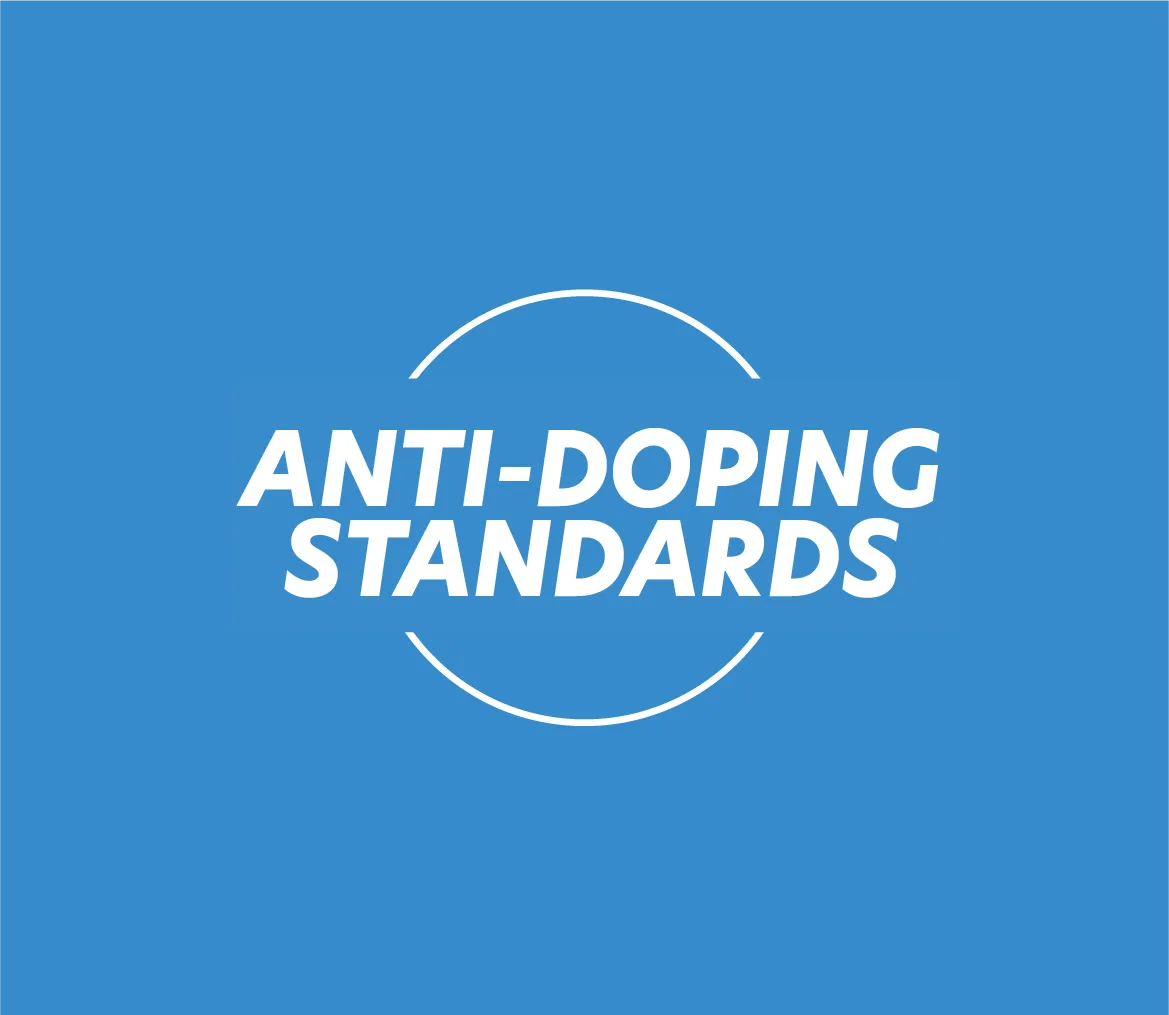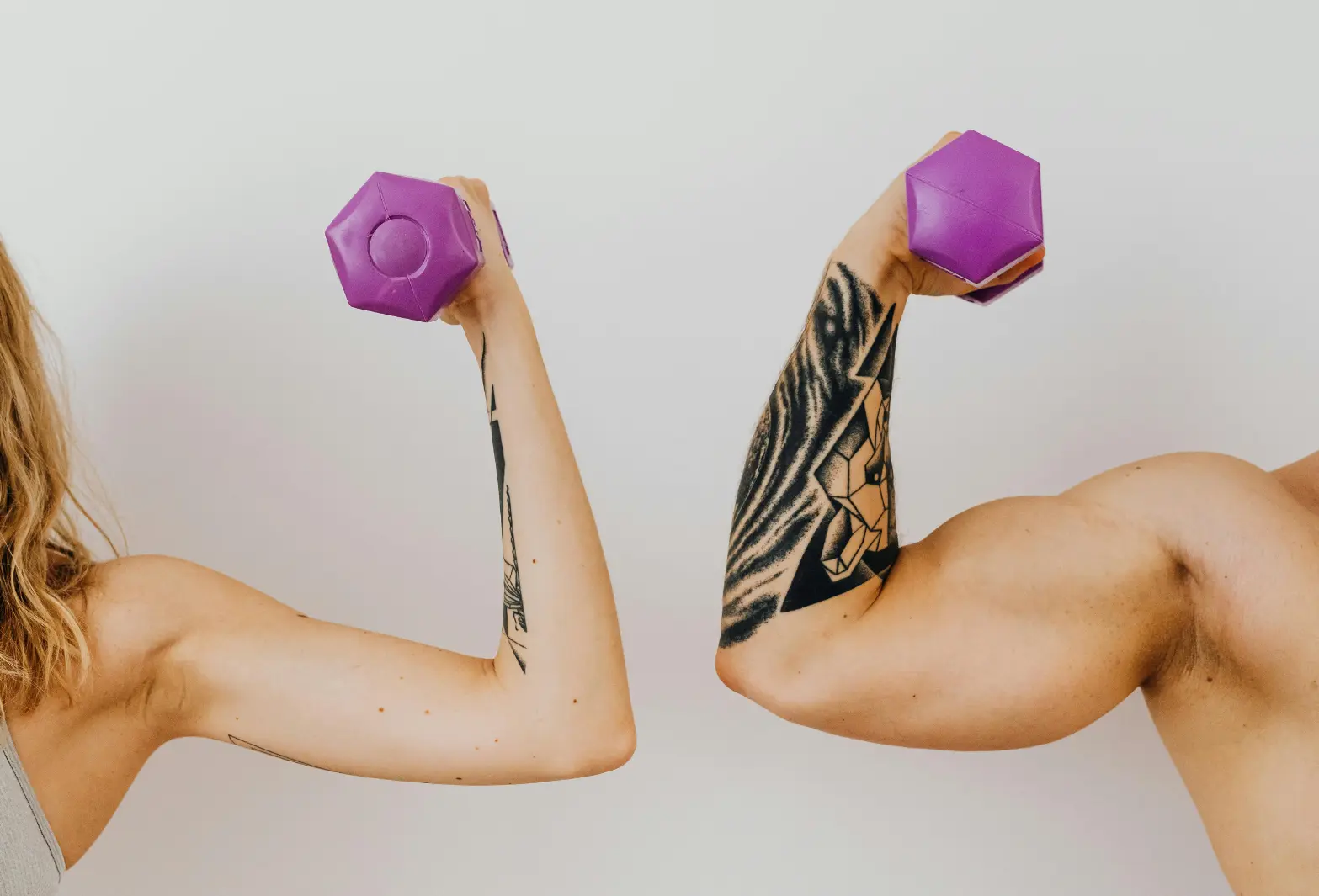In the world of sport, protein is at the heart of every conversation about muscle gain, weight loss or sporting performance. But what are the protein requirements for a man, a woman, an athlete, a sedentary person or an elderly person? It's not just a matter of whey, powder or post-workout shaker, but rather a question ofobjective, body weight, level of physical activity and, above all, distribution of protein intake throughout the day
Between plant and animal proteins, dairy products, casein or gainer, each type of protein has its own specificabsorption characteristics, nutritional qualities and effectiveness in muscle growth. This article explains their role in muscle protein synthesis, tissue repair, muscle recovery and the development of lean body mass.
We also look at current recommendations in grams per kilo of body weight, the differences between men and women, and how to adapt your diet and protein intake to your individual profile.
Why are proteins essential for building muscle?
What are proteins used for?
It is one of the three families of macronutrients, along with carbohydrates and lipids. A protein is an assembly of some twenty amino acids, which are like little bricks linked together.
On the one hand, they are involved in the structure of the body, and on the other, in its physiology.
On the structural side, proteins play a role in performance. They are the building blocks of muscle and an essential source of energy, hence their importance in physical effort. In addition to muscle cells, proteins also serve to regenerate our skin and bones.
Physiologically, proteins serve as digestive enzymes, hormones, haemoglobins and antibodies.
The role of proteins in muscle building
Muscle proteins have the day-to-day task of rebuilding muscle after microlessions of muscle fibers resulting from physiological stress (not to be confused with physical stress) linked to physical activity.
This is why most athletes focus on protein when building mass, but it is no more important than carbohydrates or lipids. Indeed, if the body doesn't have enough glycogen (carbohydrates) or fatty acid (lipids) reserves, it breaks down proteins into amino acids to produce the energy it needs, and then muscle wasting ensues.
The impact of training on protein requirements
Training has an impact on basic and protein metabolism. That's why needs change with sport.
Physical activity, whether strength or endurance, disrupts the natural and simultaneous evolution of protein synthesis and degradation. Proteolysis (protein degradation) is triggered by exercise, and continues to increase after exercise has stopped, decreasing only after 2 to 3 hours post-exercise. Protein synthesis, on the other hand, increases at the end of exercise, depending on its intensity.
Protein requirements vary according to the type of activity (endurance or power sports), and in all cases, the higher theintensity of the exercise, the greater the protein requirement.
Metabolic differences between men and women
At the hormonal level, there is a metabolic difference between men and women in terms of sex hormones. While male athletes' testosterone levels remain constant, women's hormones (mainly estrogen) vary constantly through their menstrual cycle1. In sports, testosterone promotes muscle hypertrophy and strength development, hence the difference.
However, muscle development is not limited by gender, since the rate of protein synthesis renewal remains constant between young men and women. Only age can play a role, as the rate is reduced in older women2.
Women and men also have different body compositions, with a lean mass/fat mass ratio that is more advantageous, from a sporting point of view, for men. The difference is slight, so there's no need to adapt protein requirements according to gender.
Finally, we also know that natural creatine reserves are 70% to 80% lower in women than in men, which potentially justifies (depending on profiles and practices) creatine supplementation for sportswomen3 ,even if it remains just as interesting for men.

Protein requirements: differences between men and women
A calculation specific to each athlete's weight
Recommended proteins are expressed in kilograms of body weight. The recommendations are the same for men and women and depend on their discipline and training level.
However, the proportion of protein to be ingested daily after calculation will be different, since it depends on body weight. For example, if the recommendations for mass gain are 1.6 to 2 g/kg/day:
- for a woman weighing 65 kilos, this gives 1.6*65 = 104 g to 130 g of protein per day;
- for a man weighing 75 kilos, this gives 1.6*75 = 120 g to 150 g per day.
Official recommendations by type of sport
Requirements depend on each individual's weight and the balance between protein loss and protein intake. The challenge is to adapt protein requirements to cover losses and find a nutritional balance.
The most important thing is to take into account the person's level of sporting activity, as needs depend on the intensity and level of practice.
As a general rule, sportsmen and women need between 1.3 and 1.8 g/kg/day of protein4. For strength sports (bodybuilding, weightlifting...) or to build muscle mass, requirements rise to 2 g/kg/day.
The effects of proteins on the body
Proteins play an important role and provide indirect benefits (the need for muscular effort) for the body in terms of :
- muscle hypertrophy;
- optimizing adaptation to exercise ;
- to develop physical strength;
- to harmonize the silhouette;
- optimizing the use of energy substrates.
The risks of inadequate nutrient intake
There's no need to consume too much protein, as this can affect your kidney health. Instead, maintain a regular and adapted intake.
ANSES considers that protein intake is safe for healthy individuals under 60, as long as the long-term dose does not exceed 2.2 g/kg/day. It is important to remember that beyond this level, proteins are not utilized and are broken down by the kidneys, which can lead to overloading and acidification of the body. Overdosage has no beneficial effect on muscle development, but it does have an effect on the kidneys, which are overtaxed to filter out the excess.
Moreover, in women, overdosing can lead to a risk of acidosis linked to a disturbance in bone metabolism.
More generally, it is advisable to keep an eye on your energy balance. Ideal intake must cover expenditure to prevent the risk (under- or over-dosing) of developing endocrine disorders, such as amenorrhea in sportswomen. Other risks include muscular fragility and reduced testosterone levels in men, which can impair fertility.
When and how to eat protein?
Frequency and distribution throughout the day
In concrete terms, protein rations for endurance or strength disciplines such as bodybuilding are 3 per day with "classic" meals, i.e. one at each meal, with even theaddition of protein snacks after training or to supplement intake at breakfast or in the evening.
Sport leads to protein breakdown, and it's during the recovery phase, synonymous with rebuilding muscle fibers, that the body needs a supplement.
For its part, the International Society of Sports Nutrition (ISSN) recommends ideally distributing the total amount of protein to be consumed every 3 to 4 hours throughout theday5. This system of splitting up the protein allows the body to better assimilate and digest it. It is also a way of maintaining a constant level of amino acids in the blood.
Beware of increasing the number of meals too suddenly, as this could lead to an increase in body fat.
That's where protein powders come in, like whey, a whey protein that is becoming a very interesting dietary supplement, especially for convenience or when access to complete protein sources is limited.
Before, during and after training: how to choose?
There are many questions about the ideal time to consume protein. Here's a quick summary of the benefits of consuming protein before, during or after training.
Muscle growth is the result of the body's response to stress-related muscle micro-injury, combined with the right diet and rest. This is where muscle proteins come in.
Providing a dose of protein before exercise has the advantage of :
- protect the muscle, which is supplied with a dose of amino acids for training. This energy supply limits protein breakdown, improves recovery and promotes muscle gain.
- delay fatigue during long, intense endurance sessions.
- regulate blood sugar levels, stabilizing energy and preventing insulin spikes and crashes.
Generally speaking, the pre-exercise dose corresponds to the proteins in the classic diet, rather than a dose of whey-type proteins, which are rapidly absorbed and better suited to post-exercise.
During exercise, it is not recommended to consume proteins, which are difficult to digest, except in special cases, particularly in ultra-endurance.
After the session, we often hear about the metabolic window, the moment when the body switches from the process of protein degradation (catabolism) to reconstruction (anabolism). Studies differ as to the effect of this window on the body's more efficient absorption of proteins. Some studies point to muscle gain, while others say it's the total daily amount of protein that counts.
There is, however, a consensus on the benefits of a combined intake of carbohydrates and protein to optimize recovery by replenishing glycogen reserves in addition to the effect of protein.
Finally, you can also take your protein before bed. Sleep is a factor in sports performance. It's a period of regeneration for the body, during which it rebuilds its resources and growth is stimulated. Proteins have a key role to play in this process, as they are at the heart of muscle rebuilding.
Which protein sources to choose?
Animal vs. plant proteins: what are the differences?
Plant and animal proteins do not have the same nutritional value. Animal proteins are consumed preferentially by muscles, due to their more complete amino acid profile4.
There are 9 essential amino acids, including BCAAs, which the body cannot manufacture on its own, and which are systematically supplied by the diet or a protein supplement.
Table of essential amino acids and their functions:
| Amino acid | Main function |
|---|---|
| Leucine | Stimulates muscle protein synthesis |
| Isoleucine | Blood sugar regulation, muscle recovery |
| Valine | Muscle tissue growth and repair |
| Lysine | Energy production, collagen formation |
| Threonine | Bone health, antibody production |
| Methionine | Metabolism, detoxification |
| Phenylalanine | Neurotransmitter production |
| Tryptophan | Mood and sleep regulation |
| Histidine | Tissue repair, red blood cell production |
The problem with plant proteins is that they don't have all the essential amino acids in optimal dosages like animal proteins. To avoid any deficiencies and compensate for meat or fish consumption when you're a vegetarian, for example, combine a cereal and a legume for a more biologically complete protein combo.
Here are some protein food combinations to consider:
- rice + soy ;
- kidney beans + corn ;
- rice + lentils ;
- wheat + chickpeas.

Protein powders: whey, casein... what to choose?
Whey protein is a favorite among bodybuilders looking for a mass-building supplement. It is made from whey, which is filtered, concentrated and dried to form a powder rich in high-quality protein. Its greatest asset is its BCAA content (leucine, isoleucine and valine), essential for building muscle. It is also easily assimilated by the body.
Whey protein comes in a variety of forms: concentrated, isolate, hydrolysed or native. We recommend isolate, which is purer than concentrate and offers better value for money than hydrolysed whey.
Whey is a convenient, quick and easy protein snack. Just 1 or 2 doses a day as a snack, mixed with water or milk in a shaker, and you're all set.
Whey competes with casein, which is also derived from milk. This protein is slower to digest, and its release lasts 7 to 8 hours, making it an asset at night. Whey, on the other hand, is rapidly digested, reducing the release time to 2-3 hours.
Both casein and whey are rich in leucine, essential for the anabolism required after exercise.
Protein powders have a satiety-enhancing effect, so they should not be consumed before meals, unless the aim is to lose fat by leaning out. In this case, it can be part of the dietary strategy to reduce calorie intake.
A shaker to increase Whey diffusion
Whey is a highly soluble product whose amino acid composition also explains its rapid digestion. However, it is possible to slow down absorption without compromising its effectiveness by combining the product with foods that slow down digestion. Here are several options:
- seeds: walnuts, almonds, chia, flax, etc. ;
- Fibre: green vegetables and legumes;
- vegetable milks: almond, coconut, soy.
While it is possible to modify the absorption rate of Whey, the mix must respect the individual's nutritional needs first and foremost.
3 preconceived ideas about protein
Proteins are dangerous for the kidneys
As we saw earlier in this article, what's bad for the kidneys is excess protein, which has to be eliminated if overdosed. If protein intake is adapted to the person's objective and training level, there is no risk for healthy people. Proteins in themselves do not cause kidney problems. On the other hand, protein of uncontrolled composition, potentially contaminated with unwanted products, can be totally deleterious to the kidneys and liver.
Proteins make you fat (or thin)
What causes weight gain is an imbalance in the balance between caloric intake and expenditure. Just like weight loss, it's the other way around.
Proteins, like creatine for mass gain, get a bad press because of their role in muscular hypertrophy, but when properly dosed according to the initial objective, they don't make you put on weight and are an excellent resource. In muscular hypertrophy, it's the basic stimulation by effort that induces fiber development, which is supported by protein. But proteins don't make muscle grow directly.
Protein gives you bodybuilder's arms
Don't worry: they're an essential foundation for building muscle, but on their own, they're not enough.
It takes targeted training with regular resistance exercises coupled with good protein intake and other factors like rest and hydration to build muscle mass. And it takes time.
Conclusion
Whether you're a man or a woman, young or old, your daily protein requirements for muscle building and strength development depend on a number of factors: body mass, lean mass ratio, training frequency, age, individual goals and metabolic profile. Recent studies show that an intake (for men or women) of 1.3 g to 2 g of protein per kilo of body weight is sufficient to promote muscle protein synthesis and thus the maintenance and/or healthy development of muscle mass, without compromising the maintenance of basal metabolic rate.
Protein for bodybuilding can be obtained fromfood (eggs, cottage cheese, fish) or supplements (whey isolate, gainer, casein). They should be distributed evenly throughout the day, particularly around training, as well as post-exercise or breakfast proteins to maximize assimilation and muscle fiber repair. The choice of protein varies according to specific criteria: male or female, vegetarian diet, occasional or regular athlete...
Consumption in line with requirements entails no health risk for healthy individuals. Side-effects such as kidney problems only occur in specific cases, often linked to a pre-existing pathology or an overdose. A balanced and varied diet remains the best option for meeting needs without falling into caloric excess and encouraging the accumulation of adipose tissue.
There is therefore no single best protein, but a choice to be made according to one's profile, tastes and specific needs. If in doubt, enlisting the help of a specialized and competent coach can help you optimize your protein dosage and maintain your daily portion to find the best combination.
Sources
Further information
Weight gain for women: our advice
Weight gain: calorie requirements






























